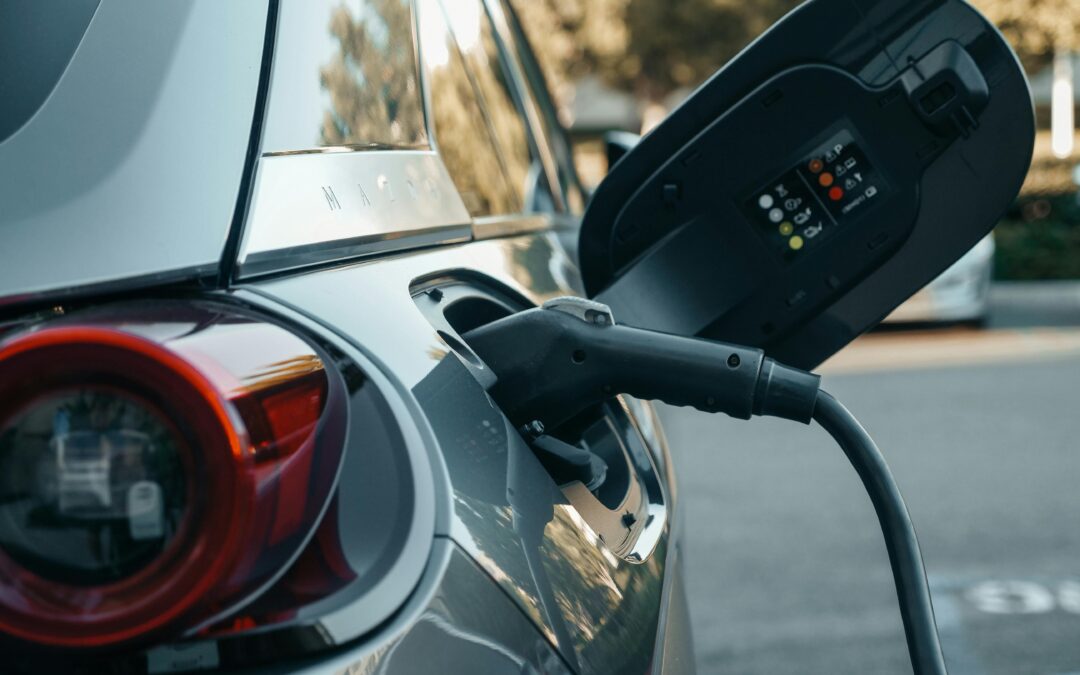Keep our news free from ads and paywalls by making a donation to support our work!

Notes from Poland is run by a small editorial team and is published by an independent, non-profit foundation that is funded through donations from our readers. We cannot do what we do without your support.
The number of fully electric passenger vehicles in Poland has passed 100,000 for the first time, new data show.
The country, which has long had some of the European Union’s lowest uptake levels for electric cars, has seen sales rise rapidly this year following the introduction of new state subsidies to buy such vehicles, recording one of the fastest growth rates in Europe.
Cieszmy się, że mamy 100 tys. elektryków. Bo rozwój rynku wkrótce stanie https://t.co/qI4QED9gLP pic.twitter.com/u76zuBNKDe
— BiznesAlert.pl ⚡ (@BiznesAlert) October 7, 2025
A monthly record 4,452 battery electric vehicles (BEVs) were registered in Poland in September. That brought the total number of registrations in the first nine months of 2025 to almost 26,000, over double the figure in the same period last year.
Electric vehicles accounted for 8.9% of all new passenger car registrations in September, up from 3.6% a year earlier.
According to figures published last month by the Polish Automotive Industry Association (PZPM) and the Polish New Mobility Association (PSNM), Poland had a total of 97,575 BEVs at the end of August. With September’s figures added, that gives 102,027 fully electric cars registered in the country.
Meanwhile, almost 3,200 plug-in hybrid electric vehicles (PHEVs) were also registered in September, bringing the total number in Poland to around 99,000.
Between January and September 2025, registrations of new cars with traditional engines, meanwhile, declined, falling 7.1% for petrol vehicles and 7.7% for diesels, PZPM data show.
The growth in both BEV and PHEV registrations in Poland this year are among the largest in the EU, according to data from the International Council on Clean Transportation (ICCT).
In the first eight months of 2025, the number of BEV registrations in Poland was up 94% on the same period in 2024 while the number of PHEV registrations rose 102%. By contrast, Germany saw rises of 39% and 61% respectively, while France saw declines of 2% and 29%.
However, Poland’s relative figures are so high in part because it is starting from such a low base, given how few electric vehicles it has compared to other European countries.
In absolute terms, Poland’s number of new registrations of BEVs (21,386) in the first eight months of 2025 is far lower than in Germany (336,629) and France (184,880), but also well below smaller countries such as Belgium (96,376), Sweden (62,673) and Austria (40,769).

Source: ICCT
Jakub Faryś, the president of PZPM, attributes this year’s rise in electric vehicle sales in Poland to tougher requirements for carmakers to cut emissions and the Polish government’s NaszEauto programme, which launched in February.
The EU-funded scheme offers up to 40,000 złoty (€9,400) in subsidies for individuals purchasing or leasing electric cars. The initiative helped reverse a nearly 3% decline in registrations recorded in 2024.
Data from the National Fund for Environmental Protection and Water Management, which manages the scheme, show that 15,647 subsidy applications had been filed by 1 October, including a record 3,751 in September, reports renewable energy news service Świat OZE.
The outlook, however, remains uncertain. The NaszEauto subsidies are due to expire for vehicles purchased after 31 March 2026. Without new funding, Faryś warns that Poland’s momentum could slow.
Poland has launched an EU-funded programme providing subsidies for people to buy or lease new electric vehicles.
"We want to make it possible and easy for Polish families to buy electric cars. We are aware that such vehicles are the future of driving" https://t.co/Kgoufb7OYY
— Notes from Poland 🇵🇱 (@notesfrompoland) February 5, 2025

Notes from Poland is run by a small editorial team and published by an independent, non-profit foundation that is funded through donations from our readers. We cannot do what we do without your support.
Main image credit: Kindel Media/Pexels

Alicja Ptak is senior editor at Notes from Poland and a multimedia journalist. She previously worked for Reuters.



















